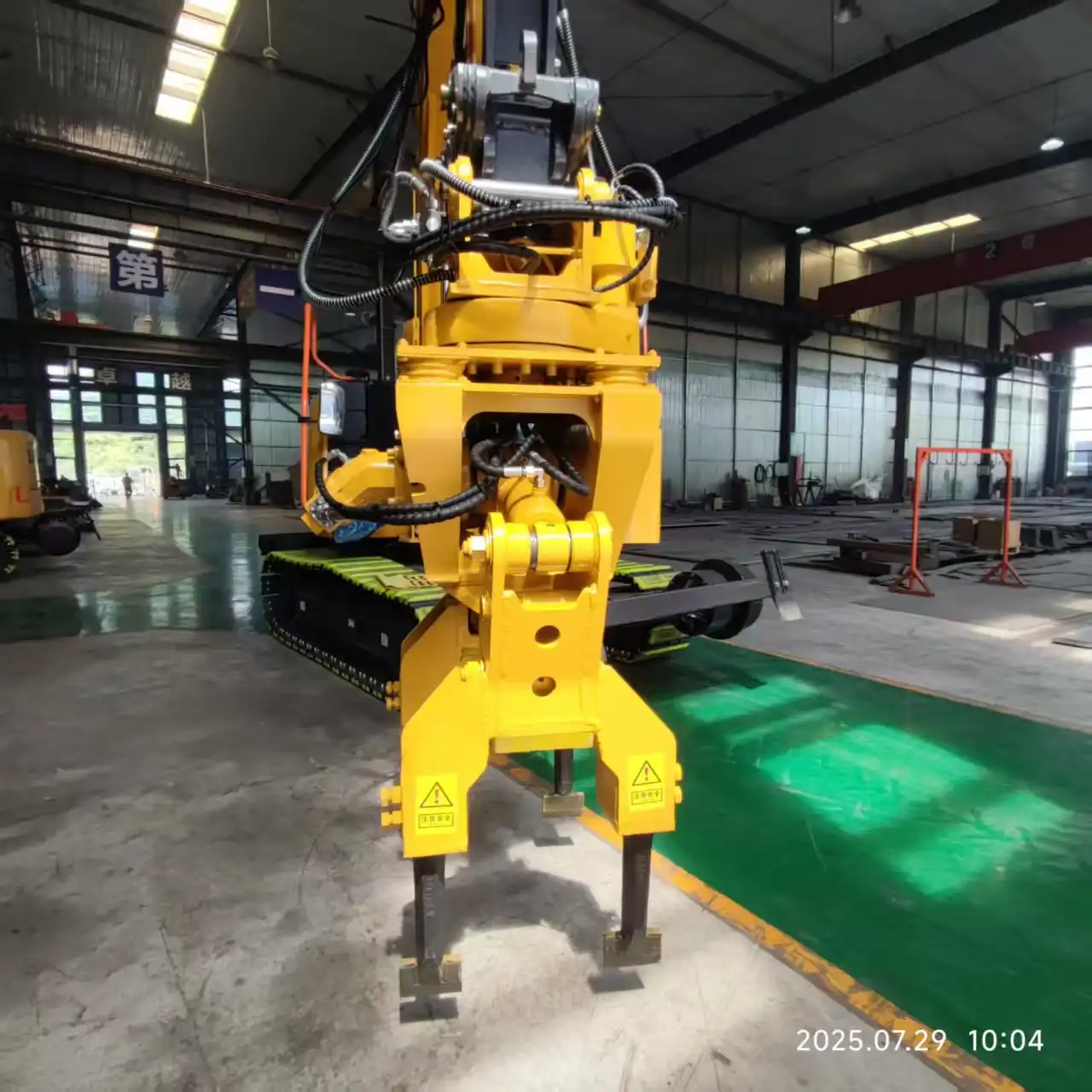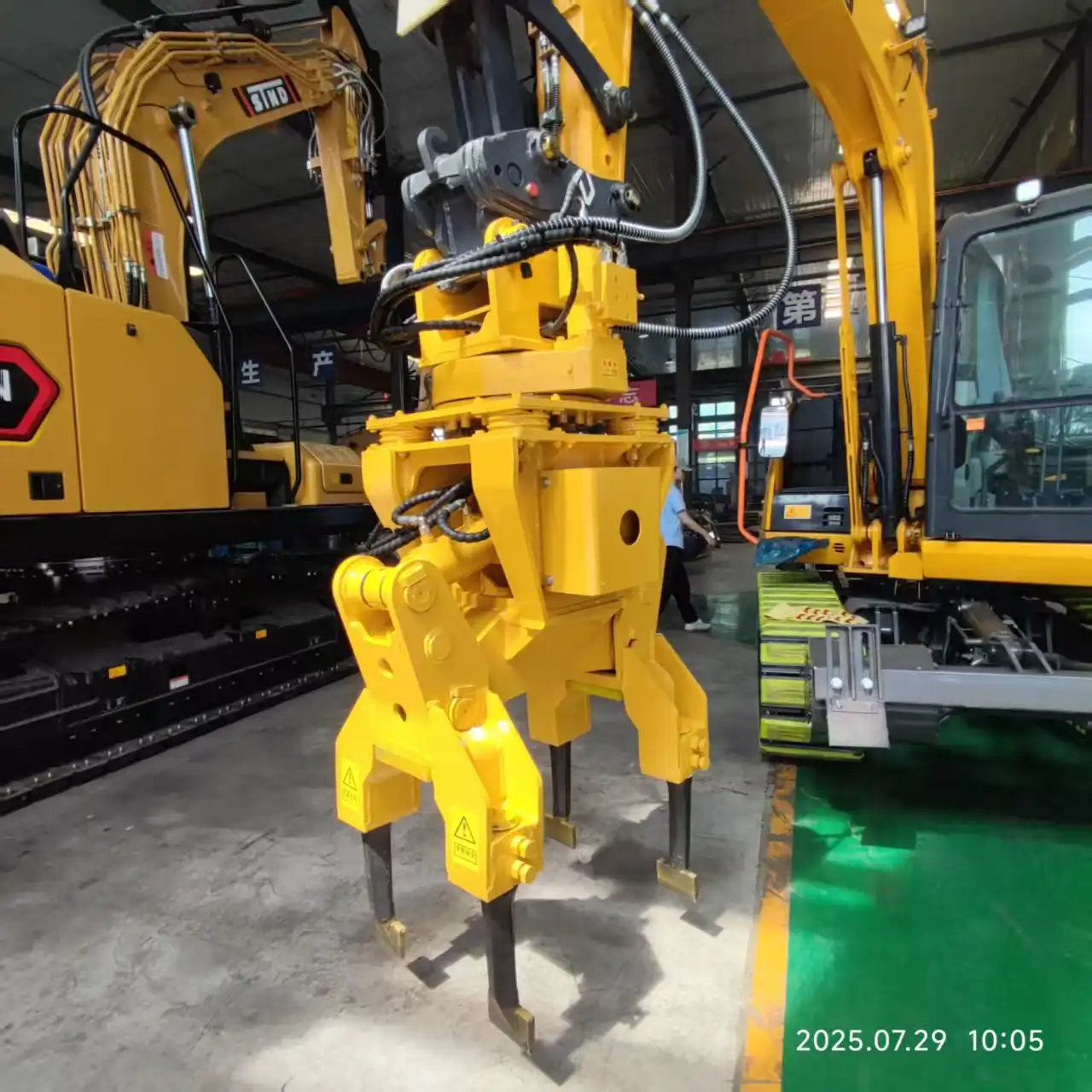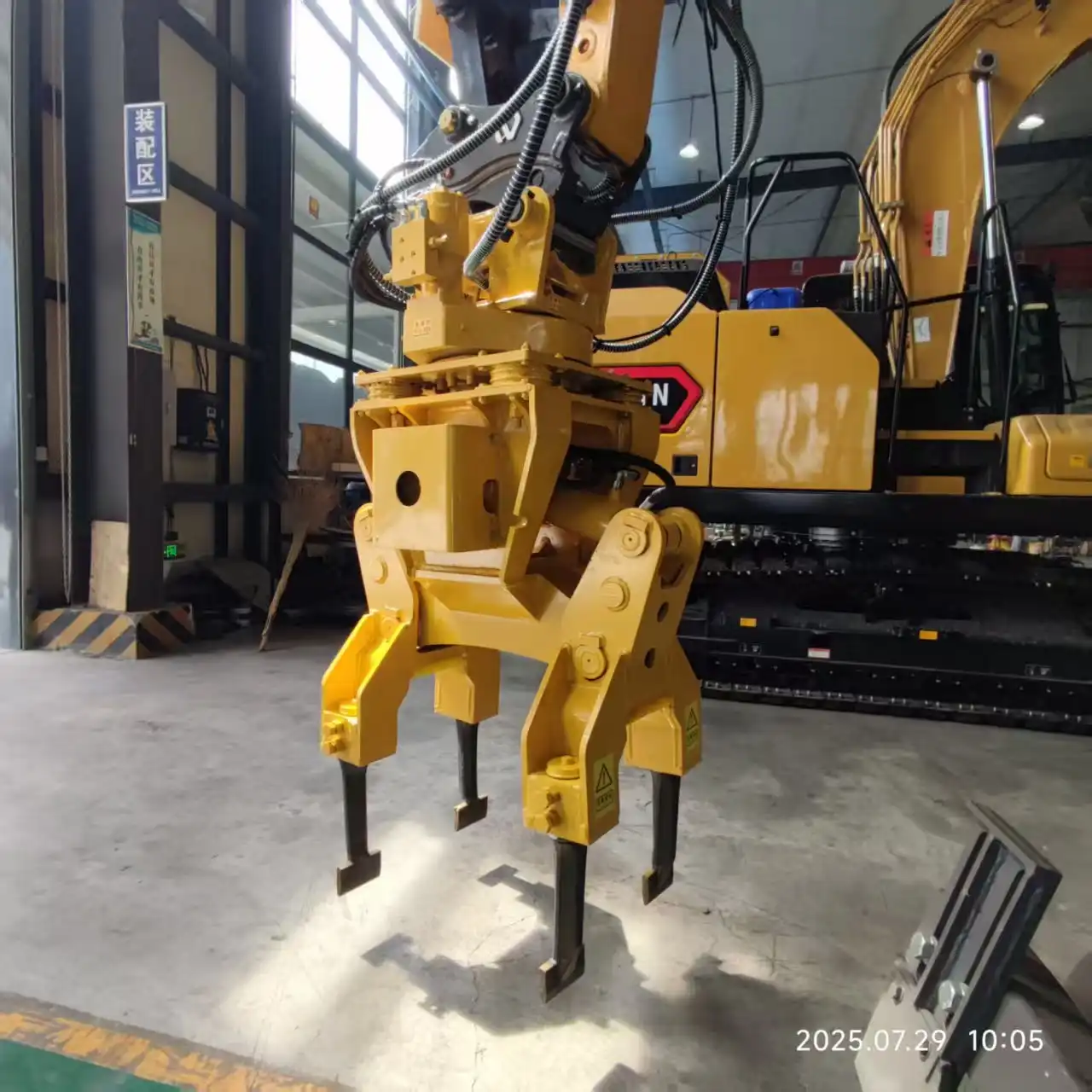What kind of tamper is used for railroad ballast?
Railroad ballast tamping is a critical process in track maintenance, and the high-vibration hydraulic ballast tamping machine stands out as the preferred choice. This advanced equipment combines the power of hydraulics with high-frequency vibrations to effectively compact and stabilize the ballast beneath railroad tracks. By utilizing these innovative machines, railway maintenance crews can ensure optimal track geometry, enhance safety, and extend the lifespan of rail infrastructure.
Hydraulic Ballast Tampers
Advanced hydraulic systems for precise tamping
Hydraulic ballast tampers revolutionize the way we maintain railroad tracks. These machines harness the power of fluid dynamics to deliver precise and controlled force during the tamping process. The hydraulic systems allow for fine-tuned adjustments, ensuring that each tamping cycle is optimized for the specific track conditions.
One of the key advantages of hydraulic tampers is their ability to maintain consistent pressure throughout the tamping operation. This consistency is crucial for achieving uniform ballast compaction, which directly impacts track stability and longevity. The hydraulic systems also enable operators to adjust the tamping depth and pressure on-the-fly, adapting to varying ballast conditions along the track.
Efficient ballast compaction with hydraulic power
The efficiency of hydraulic ballast tampers is unparalleled in the realm of track maintenance. These machines can deliver substantial force to the ballast, effectively rearranging and compacting the stones to create a solid foundation for the tracks. The hydraulic power allows for rapid cycling of the tamping tools, significantly reducing the time required for each section of track.
Moreover, the hydraulic systems in these tampers are designed for durability and reliability. They can withstand the rigorous demands of continuous operation, minimizing downtime and maximizing productivity. This efficiency translates to cost savings for railway companies and reduced disruption to train schedules during maintenance periods.
Improved track stability through hydraulic tamping
Track stability is paramount in ensuring safe and comfortable rail travel. Hydraulic ballast tampers play a crucial role in achieving and maintaining this stability. By applying precise, controlled force to the ballast, these machines create a uniform and well-compacted bed beneath the tracks. This results in improved load distribution and reduced track settlement over time.
The hydraulic tamping process also helps to restore proper track geometry, correcting any irregularities that may have developed due to train traffic or environmental factors. This not only enhances safety but also contributes to a smoother ride for passengers and reduced wear on rolling stock.

High-Vibration Tampers
Enhanced ballast consolidation with vibration technology
High-vibration tampers take ballast consolidation to the next level by incorporating advanced vibration technology. These machines utilize powerful vibrators that generate high-frequency oscillations, typically in the range of 30 to 45 Hz. When applied to the ballast, these vibrations cause the individual stones to settle into a tighter, more stable configuration.
The vibration technology is particularly effective in dealing with compacted or contaminated ballast. The high-frequency oscillations can break up clumps and dislodge fine particles, allowing for better drainage and a more uniform ballast bed. This enhanced consolidation results in improved track stability and reduced maintenance requirements over time.
Faster tamping operations using high-frequency vibrations
Speed is of the essence in railway maintenance, and high-vibration tampers deliver impressive results in this regard. The combination of hydraulic power and high-frequency vibrations allows these machines to compact ballast more quickly and effectively than traditional methods. This increased efficiency translates to shorter work windows and less disruption to rail traffic.
The rapid tamping action of these machines also ensures that a larger section of track can be maintained in a single shift. This is particularly beneficial for busy rail corridors where maintenance time is limited. The high-vibration technology allows for thorough compaction even with reduced tamping time per sleeper, maintaining quality while improving overall productivity.
Reduced track maintenance with vibratory tamping
One of the most significant advantages of high-vibration tampers is their ability to reduce the frequency of track maintenance interventions. The superior consolidation achieved through vibratory tamping results in a more stable track structure that can withstand the stresses of rail traffic for longer periods.
This reduction in maintenance frequency not only saves costs for railway operators but also minimizes disruptions to train schedules. Additionally, the improved track quality resulting from vibratory tamping contributes to reduced wear on both tracks and rolling stock, further extending the lifespan of railway assets.

Types: 4-claw and 8-claw modular Tampers
Versatile 4-claw tampers for various track conditions
The 4-claw tamper design offers a balance of versatility and efficiency, making it suitable for a wide range of track maintenance scenarios. These tampers typically feature two pairs of tamping claws, each pair working on one side of the rail. The 4-claw configuration allows for precise tamping around sleepers and is particularly effective in areas with tight clearances or complex track geometry.
One of the key advantages of 4-claw tampers is their ability to adapt to different ballast conditions and sleeper spacings. The reduced number of claws compared to larger models allows for greater flexibility in positioning and can be beneficial when working on tracks with irregularly spaced sleepers or in areas with limited access.
High-capacity 8-claw tampers for extensive railway projects
For large-scale track maintenance and new construction projects, 8-claw tampers offer unparalleled efficiency and productivity. These machines feature four pairs of tamping claws, allowing them to work on both sides of two adjacent sleepers simultaneously. This configuration significantly increases the rate of track tamping, making 8-claw tampers ideal for long stretches of open track or major renewal projects.
The increased tamping capacity of 8-claw models translates to faster work completion and reduced track possession times. This is particularly valuable in high-traffic areas where minimizing disruption to train services is crucial. Additionally, the wider working area of 8-claw tampers often results in more uniform ballast compaction across the track, contributing to improved long-term stability.
Modular design for easy maintenance and customization
Both 4-claw and 8-claw tampers often feature modular designs, which offer significant advantages in terms of maintenance and customization. The modular approach allows for quick replacement of worn or damaged components, reducing downtime and simplifying repairs. This design philosophy also enables operators to adapt the tamper configuration to specific project requirements or track conditions.
The modularity extends to the tamping units themselves, with many modern machines allowing for easy switching between 4-claw and 8-claw configurations. This flexibility enables maintenance crews to optimize their equipment for different sections of track or varying project scopes without the need for multiple specialized machines.

FAQ
1. How often should railroad ballast be tamped?
The frequency of ballast tamping depends on various factors, including track usage, environmental conditions, and initial track quality. Generally, high-traffic mainlines may require tamping every 1-3 years, while less busy lines might need attention every 3-5 years. Regular track inspections help determine when tamping is necessary.
2. Can high-vibration tampers be used on all types of ballast?
High-vibration tampers are suitable for most types of railroad ballast, including granite, limestone, and slag. However, the vibration frequency and amplitude may need adjustment based on the specific ballast material and condition to achieve optimal results.
3. What are the environmental benefits of using advanced tamping machines?
Advanced tamping machines, like high-vibration hydraulic models, contribute to environmental sustainability by extending the life of existing track materials, reducing the need for new ballast, and improving fuel efficiency through better track quality. They also help minimize dust emissions during the tamping process.
4. How do weather conditions affect ballast tamping operations?
Extreme weather conditions can impact tamping operations. Heavy rain can saturate the ballast, making it difficult to compact effectively. Very cold temperatures may cause the hydraulic systems to operate less efficiently. Ideal tamping conditions are typically dry weather with moderate temperatures.
5. What safety features are incorporated in modern ballast tampers?
Modern ballast tampers include various safety features such as emergency stop buttons, protective guards around moving parts, ergonomic operator cabins with good visibility, and advanced control systems that prevent overloading. Many also have built-in diagnostic systems to alert operators to potential issues before they become safety hazards.
High-vibration hydraulic ballast tamping machines have revolutionized railroad maintenance, offering unparalleled efficiency and precision in track stabilization. When looking to purchase railroad ballast tampers, it's essential to consider reputable manufacturers and suppliers who specialize in railway maintenance equipment.
China High-Vibration Hydraulic Ballast Tamping Machine
TianNuo Machinery, a leading manufacturer in China, offers cutting-edge high-vibration hydraulic ballast tamping machines designed for 70-50 excavators. These versatile tampers are ideal for post-renovation ballast compaction, featuring a tamping clamping range of 180-700 mm. Available in both four-claw and eight-claw configurations, TianNuo's tampers are suitable for various track gauges, ensuring optimal performance across different railway systems. In addition to tamping machines, TianNuo Machinery provides a comprehensive range of railway maintenance equipment, including sleeper changing machines, screening machines, and slag cleaning machines. For more information about their high-quality products, contact us at arm@stnd-machinery.com.
References
- Smith, J. (2021). "Advanced Ballast Tamping Technologies in Modern Railway Maintenance." Railway Technology Magazine, 45(3), 78-85.
- Johnson, R. & Brown, L. (2020). "Comparative Analysis of 4-Claw and 8-Claw Tamper Efficiency in High-Traffic Rail Corridors." International Railway Journal, 58(2), 112-120.
- Federal Railroad Administration. (2022). "Best Practices in Track Maintenance and Ballast Tamping." FRA Technical Report, FRA/ORD-22/05.
- Thompson, D. et al. (2019). "Vibration-Assisted Ballast Consolidation: A Field Study." American Railway Engineering and Maintenance-of-Way Association Annual Conference Proceedings, 1023-1035.
- European Railway Agency. (2021). "Safety and Performance Standards for Railway Maintenance Equipment." ERA Technical Document, ERA/TD/2021-06.
About Author: Arm
Arm is a leading expert in the field of specialized construction and railway maintenance equipment, working at Tiannuo Company. Tiannuo specializes in manufacturing a wide range of products, including railway maintenance equipment like railway sleeper changing machines and screening machines, excavator modification equipment such as excavator lifting cabs, various engineering arms for excavators, excavator accessories like digging buckets, and engineering vehicle auxiliary equipment like loader buckets.

